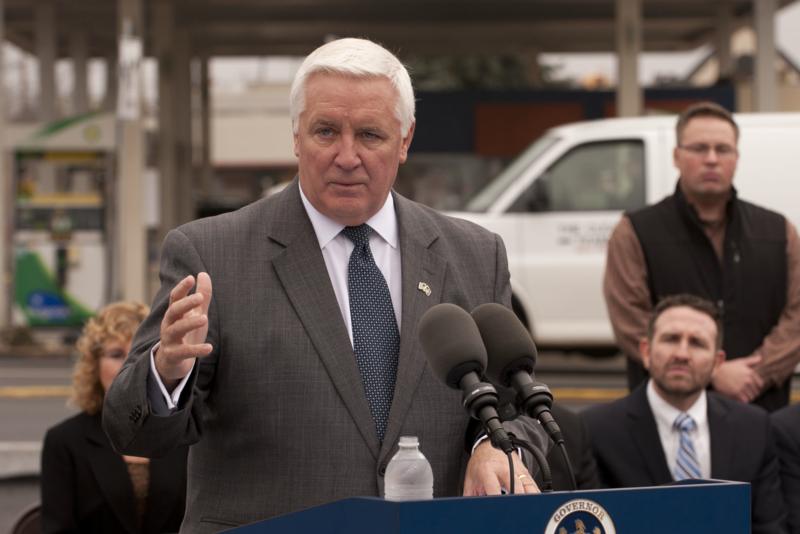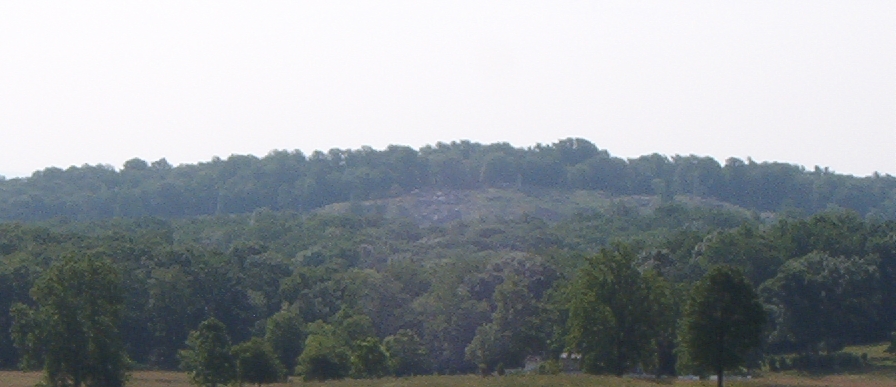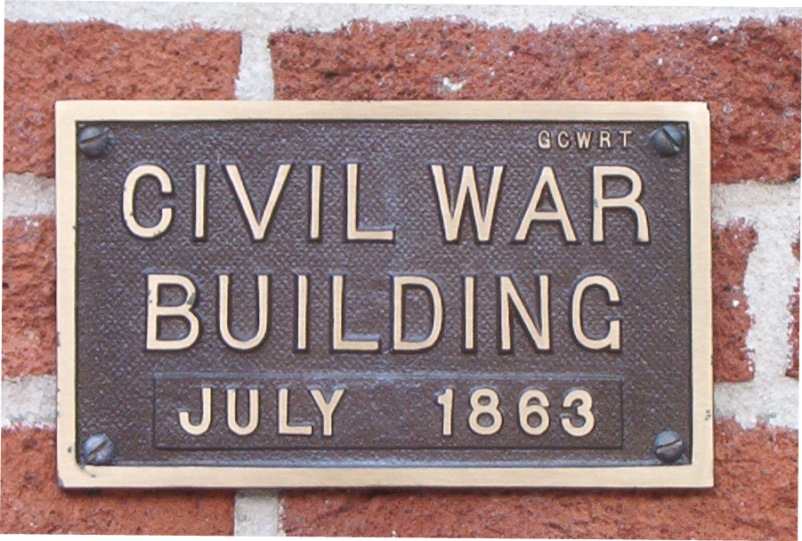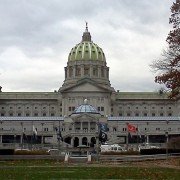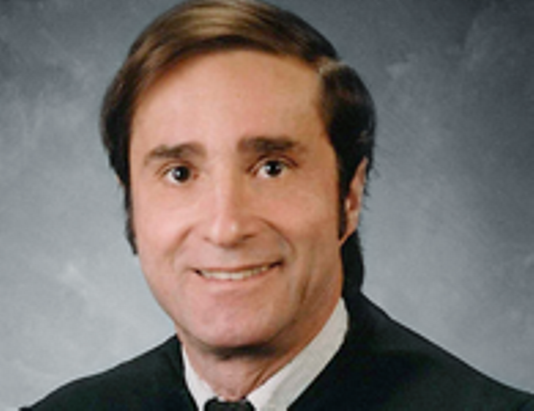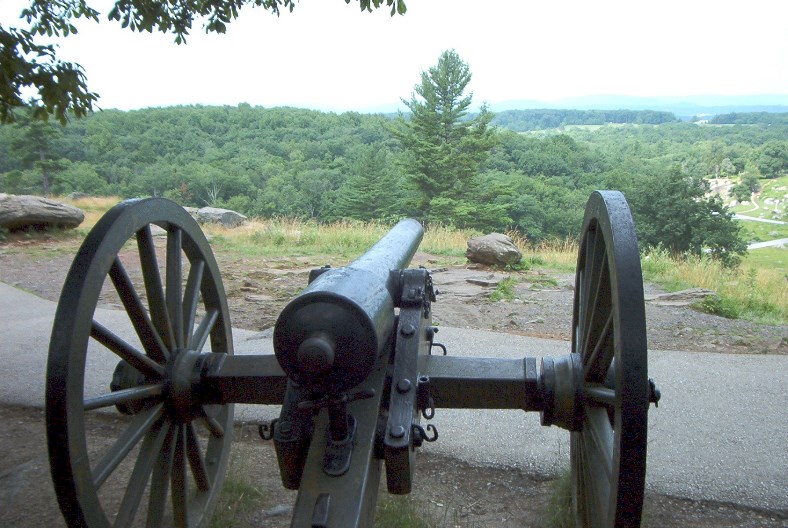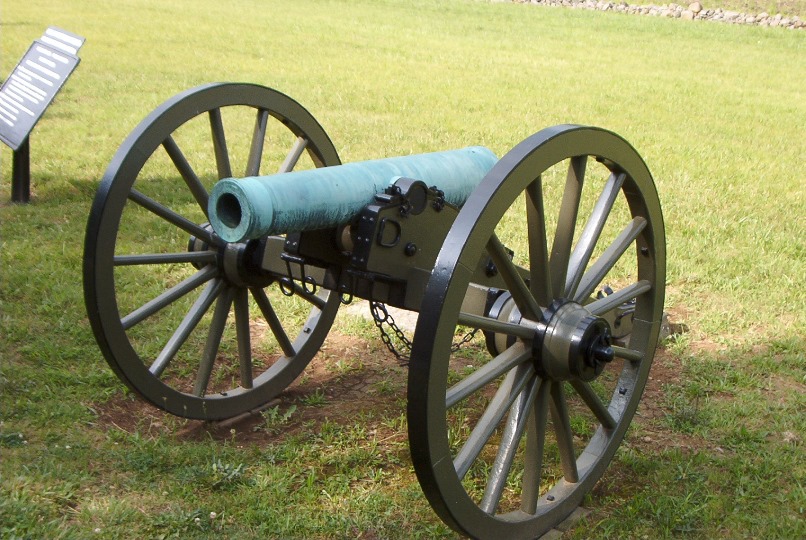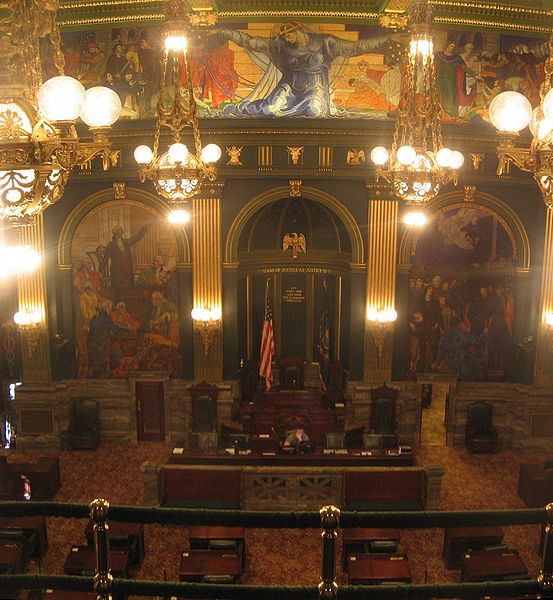Yesterday Franklin Horner and the 12th Pennsylvania Reserves marched until 1:00 a.m., some twenty-five miles. Today they began marching at 6:00 a.m. He writes that they have halted within sight of the rebels and are expecting to march onto the battlefield soon. Suddenly, his writing changes to present tense, the immediacy so great he forgets punctuation: “ evening we are on the battlefield and in line of battle the boys are determined to drive the rebels out of the state the battle is rageing [sic} fiercely now we will soon be in.”
From Thomas Ware’s diary on this Thursday we learn that he marches through Cashtown and came in sight of Gettysburg. They rested in an “old field” until 2:00 p.m. “…at which time we left to Attack the Enemy. After passing through a very heavy shelling for 20 minutes we rested and then formed a line of battle. Here at the foot of the mountain the engagement became general & fierce…”
Franklin Horner, exhausted from marching, lack of sleep, little food and the sheer nervousness of not knowing whether, in ten minutes, he would be alive or dead, ends up on the boulder-strewn west slope of a small hill south of Gettysburg, which would later come to be known as Little Round Top. It is from there he writes his entry in his diary.
Thomas Ware, his brother Robert, and the rest of the men of the 15th Georgia have marched hours with but little rest to finally end up at the lower end of an oddly-shaped triangular field near a jumble of huge boulders the locals call the Devils Den. Just beyond Ware in the Triangular Field, within musket-range in fact, is the upper slope of Little Round Top where Horner stands, two American enemies, after 35 days of campaigning, finally on the same part of the battlefield at Gettysburg.
It is here where I must end my narrative. I do not want to spoil the ending of the book for those interested in reading it. A hint as to how it ends: one soldier lives, the other dies.
I will share an interesting story, a “perk” so to speak, associated with the writing of the book. Several years after it was published, I received a letter from a resident of Washington, Georgia, asking if I would like to speak to the descendants of Thomas Ware. That was a particularly busy year for me so I deferred, suggesting perhaps a later time. I honestly never expected to hear from him again. But Gary Norman was persistent, and the next year my wife Carol and I flew to Atlanta and drove our rental car through a night-time thunderstorm to Washington. We were put up in a delightfully restored building owned by the president of the local historical society. The next day we were treated to lunch with over 25 Wares, Normans, and Remsens, names which appear in the roster of Company G, 15th Georgia Infantry.
One person I was particularly interested in meeting was Mary Lucy (Ware) Probst, Thomas Ware’s grand-niece, whose name had been given to me by family member Ken Norman early in my research. Every family should be lucky enough to have someone like Mary Lucy in it, for if they did their heritage would never be lost. I spoke with and wrote to her numerous times during the development of the book. It was only fitting that I should present to her, on behalf of the family, the microfilmed copy of Thomas Ware’s entire diary, which I had purchased from the University of North Carolina, Southern Historical Collection for my research. Now, anyone in the family can read first hand of their relative’s heroic, harrowing journeys.
I spoke that afternoon to some thirty heirs to the legacy of the one Confederate soldier, out of several hundred thousand, whom I had chosen to represent all the rest. For me it was emotional to have gotten to know their ancestor so well, and to pass that information on to them. I spoke about observations he had made of the land through which he was marching and how many of those landmarks remain. I talked about how astounded I was that throughout his entire diary, there were no references to slavery for this Southerner. The only “N” word Thomas ever used was “Negro” speaking of someone named Steve who sent him some food from home. I told them of the admiration I had for their kin, who endured more, physically and emotionally, than anyone should have to protect his family back in Georgia. I told them how honored I was that they should invite me to speak to them.
Gary Norman’s wife Suzanne is a Ware. They sponsored a reception at their house after my speech to the family. Speaking to Suzanne about the research and miles traveled to produce the book, I told of my one disappointment. In all the volumes of books and papers I perused and the archives I visited, I never found a photo of Thomas Ware. I had no idea what this young man, whose life I had chronicled, whose most intimate hopes and fears I was privy to, looked like.
“Oh,” Suzanne said. “I have his photo hanging on my wall.” She walked me into the house and handed me a small picture of the young man whose life took up so much of my life for the past several years. I felt a well of emotion as I looked into his face. Two words, probably sounding strange to the rest of the Ware family who had gathered around, but summing up all that he and I had been through over the several years it took to research and write his book came out of my mouth:
“Hello, Thomas.”


